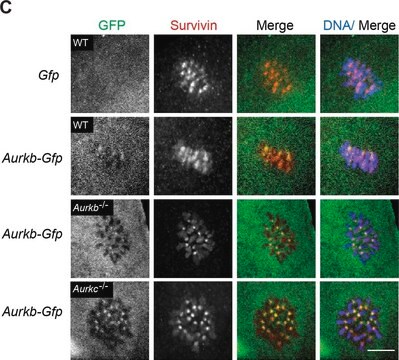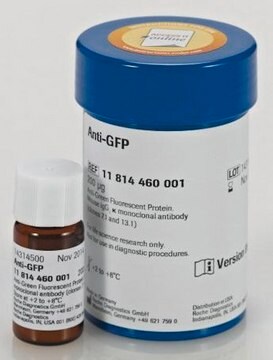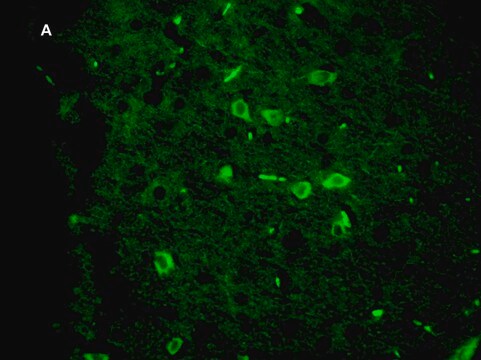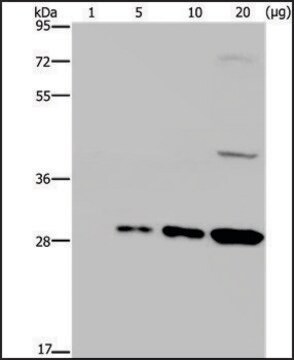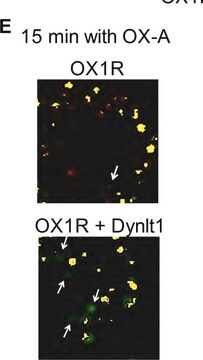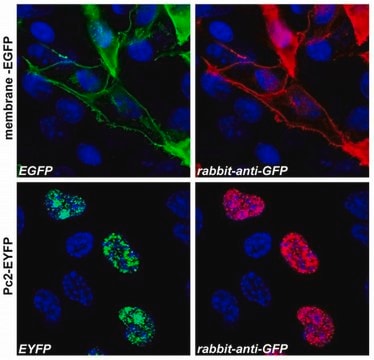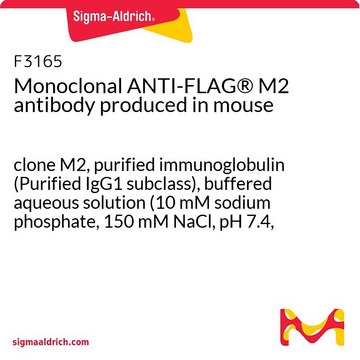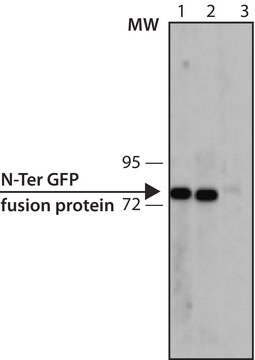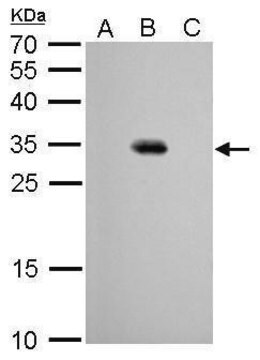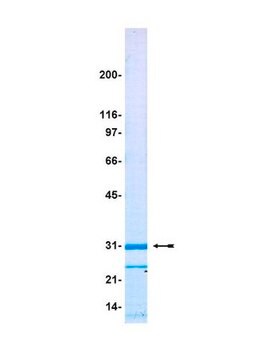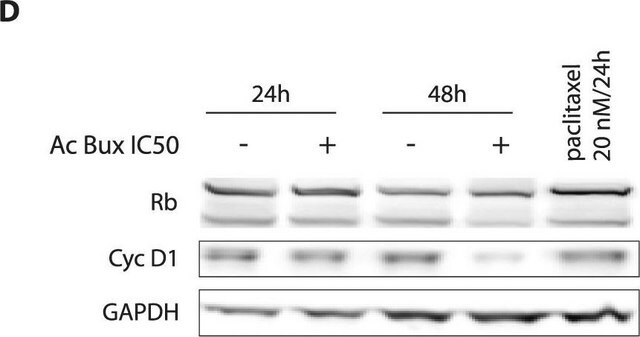G6795
Anti-Green Fluorescent Protein (GFP), N-terminal antibody, Mouse monoclonal
clone GSN24, purified from hybridoma cell culture
Sinónimos:
Anti-GFP
About This Item
Productos recomendados
origen biológico
mouse
conjugado
unconjugated
forma del anticuerpo
purified immunoglobulin
tipo de anticuerpo
primary antibodies
clon
GSN24, monoclonal
Formulario
buffered aqueous solution
mol peso
antigen 27 kDa
concentración
~2 mg/mL
técnicas
western blot: 1-2 μg/mL using GFP fusion proteins expressed in extracts of transfected cells
isotipo
IgG1
Condiciones de envío
dry ice
temp. de almacenamiento
−20°C
2-8°C
modificación del objetivo postraduccional
unmodified
Descripción general
Especificidad
Aplicación
Acciones bioquímicas o fisiológicas
Forma física
Almacenamiento y estabilidad
Cláusula de descargo de responsabilidad
¿No encuentra el producto adecuado?
Pruebe nuestro Herramienta de selección de productos.
Opcional
Producto relacionado
Código de clase de almacenamiento
10 - Combustible liquids
Clase de riesgo para el agua (WGK)
WGK 3
Punto de inflamabilidad (°F)
Not applicable
Punto de inflamabilidad (°C)
Not applicable
Elija entre una de las versiones más recientes:
¿Ya tiene este producto?
Encuentre la documentación para los productos que ha comprado recientemente en la Biblioteca de documentos.
Los clientes también vieron
Nuestro equipo de científicos tiene experiencia en todas las áreas de investigación: Ciencias de la vida, Ciencia de los materiales, Síntesis química, Cromatografía, Analítica y muchas otras.
Póngase en contacto con el Servicio técnico